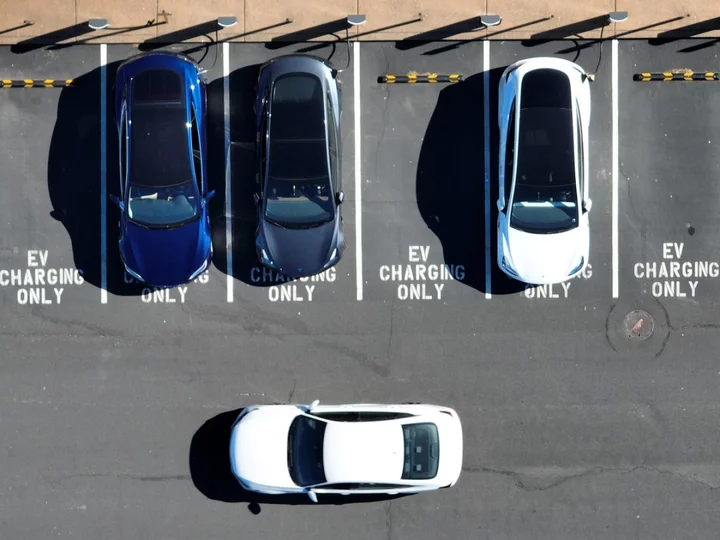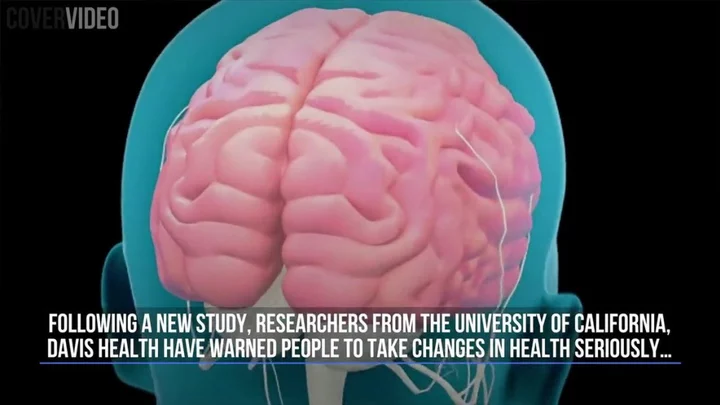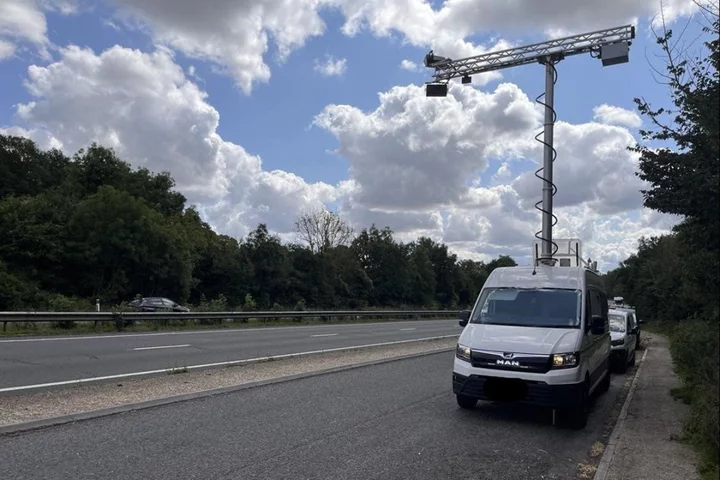
Europe to cover continent in fast EV chargers under new law
The European Union has passed a new law to cover the continent in fast charging stations in order to meet the growing demand of electric cars. The legislation calls for fast recharging stations for cars and vans every 60 kilometres (37 miles) along the EU’s main transport corridors by 2025. The same distance requirements for heavy goods vehicles will need to be met by 2030. Airports and ports will also need to provide electricity for passenger vessels and aircraft by 2025. “The new law is a milestone,” said Raquel Sánchez Jiménez, Spain’s Minister of Transport. “We are optimistic that in the near future, citizens will be able to charge their electric cars as easily as they do today in traditional petrol stations.” The new EU law forms part of the ‘Fit for 55 package’, announced by the European Commission in 2021, which aims to reduce net greenhouse gas emissions by at least 55 per cent by 2030 compared to 1990 levels. The EU is also aiming to achieve climate neutrality by 2050. Electric car ownership in Europe and worldwide has seen huge growth in recent years, with EV car sales now representing around one fifth of all new car sales globally. Last month, the battery-electric car market in the EU surged from 10.7 per cent to 15.1 per cent year-on-year, according to figures from the European Automobile Manufacturers’ Association (ACEA), overtaking diesel vehicles for the first time. The countries with the biggest growth were the Netherlands, Germany and France, contributing to more than 700,000 units sold in the first half of the year. Read More Battery breakthroughs are about to trigger a transport revolution
2023-07-26 23:49

Google, Microsoft, OpenAI and Anthropic announce industry group to promote safe AI development
Some of the world's top artificial intelligence companies are launching a new industry body to work together — and with policymakers and researchers — on ways to regulate the development of bleeding-edge AI.
2023-07-26 23:24

Earth-like planet that humans could live on found just 31 lightyears away
A planet with conditions on the surface resembling Earth has been discovered a relatively short distance from us. In fact, it’s just 31 light-years away, which is the space equivalent of 'down the road'. Scientists are always excited when it comes to the discovery of new exoplanets, and this is no different. The planet, named Wolf 1069 b, is the sixth closest exoplanet to Earth has been found and the findings were published in the journal Astronomy & Astrophysics. Sign up to our free Indy100 weekly newsletter It orbits the red dwarf - which is named Wolf 1069. As such, the planet has been given the name Wolf 1069 b. The planet was discovered during a study called CARMENES which is a long-term study based around finding exoplanets. Encouragingly, scientists believe that the planet sits in the habitable zone around its sun where water can exist in liquid form. The study was undertaken by a team led by astronomer Diana Kossakowski of the Max Planck Institute for Astronomy. Kossakowski said: "When we analyzed the data of the star Wolf 1069, we discovered a clear, low-amplitude signal of what appears to be a planet of roughly Earth mass. "It orbits the star within 15.6 days at a distance equivalent to one-fifteenth of the separation between the Earth and the sun." It comes after a new planet was discovered with a surprisingly fluffy composition - like candy floss. The exoplanet, WASP-193b, was discovered 1,232 light-years away and while it's nearly 50 percent bigger than Jupiter, it's light and fluffy making it as dense as the sweet treat. According to a team led by astronomer Khalid Barkaoui of the University of Liège in Belgium, the planet orbits a Sun-like star named WASP-193. This star is around 1.1 times the mass and 1.2 times the radius of the Sun and is very close to the Sun in temperature and age. The planet orbits the star around once every 6.25 days. Have your say in our news democracy. Click the upvote icon at the top of the page to help raise this article through the indy100 rankings.
2023-07-26 23:15

Elon Musk takes control of @X account from user who had held it for 16 years
The official account for Elon Musk’s X app has switched from @Twiter to @X, after the previous owner of the account moved to a new one. The single-letter username had been registered to Gene X. Hwang, the co-founder of photo firm Orange Photography, for more than 16 years before Twitter’s sudden rebranding on Monday brought the account under scrutiny. On Tuesday, Mr Hwang said that neither Mr Musk nor X had reached out to him, however by Wednesday the account was under the control of the tech billionaire’s company. “Alls well that ends well,” Mr Hwang posted from a new account, @x12345678998765. It is unclear how much Mr Musk or X paid for the one-letter account, if anything at all. The Independent has reached out to both X and Mr Hwang for further information. Mr Musk has reportedly taken over other accounts without permission since he took over the platform in October 2022. According to Platformer editor Zoe Schiffer, the world’s richest person took over the username @e shortly after acquiring the company for $44 billion, despite the original owner of the account being unwilling to part with it. The @e account remains inactive, featuring the name ‘John Utah’ – the same as the protagonist of the 1991 film Point Break – and following just three accounts: Elon Musk, LAist and Nasa. X has also changed its other official accounts to ditch the Twitter branding, renaming its subscription service to @XBlue, and @TwitterSupport to @Support. The company’s Twitter signage was also removed from its San Francisco headquarters on Monday. The website domain X.com also now redirects to Twitter.com, while all of the site’s blue bird logos have been replaced with a crowd-sourced X logo. The hasty switch from one brand to another may result in legal difficulties for Mr Musk, according to trademark lawyers, after it was revealed that the billionaire does not own the intellectual property rights for the letter X when it relates to social networking. Tech rivals Meta and Microsoft both own trademarks for ‘X’ in different domains, with Meta’s Mark Zuckerberg currently controlling the federal trademark for a blue-and-white letter ‘X’ for “social networking services”. “There’s a 100 per cent chance that Twitter is going to get sued over this by somebody,” one US-based IP lawyer said on Tuesday. Read More What is Elon Musk’s ‘everything app’ X? What is Elon Musk’s ‘everything app’ X? Elon Musk red-faced as police halt Twitter sign removal leaving firm called ‘ER’ Twitter to X: Why Elon Musk rebranded the social networking platform
2023-07-26 20:19

Study reveals the best exercises to lower blood pressure
A study has found the best exercises to lower blood pressure, so get ready to go to the gym. Research published in the British Journal of Sports Medicine and conducted at Canterbury Christ Church and Leicester universities, compared the efficacy of different forms of exercise on reducing blood pressure and found that “isometric exercises” – which involve engaging muscles without moveme are your best bet. That means it is time to hold a wall-sit, or plank for ages. Fun times. The study examined 270 randomised controlled clinical trials, involving 15,827 participants, on the effects of different types of exercise on resting blood pressure. It even found that these isometric techniques were almost twice as effective as government recommended exercises, aerobic activity like cycling and walking, though they found these other forms of exercise were effective too. Reducing blood pressure reduces your chance of stroke, heart failure, and other issues. Sign up to our free Indy100 weekly newsletter Over-40s are advised to have it checked every five years. Treatment often involves medication but patients are also advised to eat healthily, reduce alcohol intake, stop smoking and exercise regularly. Jamie O’Driscoll, a reader in cardiovascular physiology at Canterbury Christ Church university and senior author of the report, said in isometric exercises the muscle remained contracted but did not change in length. This static contraction could squeeze the vessels that supplied blood to the working muscles – which reduced the flow of blood to the muscle during the exercise and therefore oxygen supply to the muscle. When the muscle relaxed afterwards, it caused a large flow of blood through the vessels (this was different to other modes of exercise) and was likely to be the trigger driving these greater improvements in blood flow regulation. “Performing 4 x 2 minutes of wall sits, with 2-minutes’ rest in between, three times per week, is an effective way to reduce your blood pressure,” said O’Driscoll. “They should be done alongside other exercise modes, to provide the maximum range of exercise choices rather than limiting them.” Dr Kush Joshi, a sports and exercise medicine consultant and fellow of the Faculty of Sport and Exercise Medicine, welcomed the study’s findings, but questioned how easy it would be for patients to do. “The reality is a significant proportion of the population will not be able to do a plank or wall sits, and furthermore may not enjoy these types of activities,” he said. “Solutions need to be found to make these exercises accessible to all individuals with elevated blood pressure, and the study should provide impetus to policymakers to make exercise the bedrock of treatment of not only high blood pressure but other medical conditions and so to reduce the burden of medication for the population.” Joanne Whitmore, a senior cardiac nurse at the British Heart Foundation, said it was encouraging to see the benefits of other forms of exercise, as well as aerobic exercise. “We know that those who take on exercise they enjoy tend to carry on for longer, which is key in maintaining lower blood pressure.” But she said it was important to make lifestyle changes too, such as losing weight, eating more healthily and reducing alcohol consumption. Have your say in our news democracy. Click the upvote icon at the top of the page to help raise this article through the indy100 rankings.
2023-07-26 18:53

Snap Shares Drop After Sales Forecast Misses Estimates
Snap Inc. projected revenue at the lower end of analysts’ estimates for this quarter, signaling that improvements to
2023-07-26 17:46

Alphabet Shares Gain on Revenue Beat From Google Search
Google parent Alphabet Inc. reported second-quarter revenue that exceeded analysts’ expectations, boosted by advertising on the company’s flagship
2023-07-26 17:16

Police use AI camera van to spot drivers using mobile phones
A police spy camera van which uses artificial intelligence (AI) to detect drivers using their mobile phones at the wheel and not wearing seat belts has led to nearly 500 driving offences being identified. Hampshire and Thames Valley Police forces targeted commercial vehicles in a week-long operation on the A34 and the A303 using the Sensor test vehicle with the Acusensus “Heads-up” solution provided by infrastructure consultancy AECOM. The AI-equipped camera van can detect drivers using their phones using two cameras. The first is set at a shallow angle to identify a mobile phone close to the driver’s ear as well as spot whether a seat belt is being worn, and the second has a steep view to see if a mobile phone is being held down in front for texting. Once the offences are identified by the AI system, the results are double-checked by at least two humans before being considered for prosecution. Simon Gomer, manager of the police forces’ Safer Roads Unit, said: “These are very exciting times and this has been a great opportunity for both forces to utilise the latest in AI technology. “But the results we’ve had from just one week sadly show how prolific these offences are. We will continue to spread the message that distracted driving kills, these offences will be punished and social habits need to change.” Dr Jamie Uff, of AECOM, said: “Despite the often-reported dangers of distracted driving and failing to wear seat belts, the numbers of people killed or seriously injured as a result of these behaviours remain high. “The technology AECOM is deploying makes detection straightforward and is providing valuable insight to the police and policy makers on the current level of road user behaviour. We are really keen for the use of this technology to be expanded to raise awareness and improve road safety for everyone.” The Heads-up van identified 86 drivers suspected of using a phone and 273 motorists or passengers suspected of not wearing a seat belt, with a further 132 mechanical offences identified. Five arrests were also made for offences such as drug-driving and disqualified driving. Police Sergeant Paul Diamond, of the Commercial Vehicle Unit, said: “It is always disappointing to see the level of danger some people bring to themselves and other motorists, but with dedicated operations like this we can combat the threat and remove the worst offenders.” Read More Charity boss speaks out over ‘traumatic’ encounter with royal aide Ukraine war’s heaviest fight rages in east - follow live
2023-07-26 16:50

SK Hynix says memory chip recovery has begun, flags robust AI demand
By Joyce Lee and Heekyong Yang SEOUL (Reuters) -South Korea's SK Hynix said on Wednesday the memory chip market was
2023-07-26 10:47

Anthropic’s Amodei Warns US Senators of AI-Powered Weapons
A CEO whose company says its artificial intelligence products are tools “that people can rely on” warned senators
2023-07-26 06:45

Microsoft Posts Tepid Sales Growth as Cloud Business Slows
Microsoft Corp. reported tepid fourth-quarter sales growth, held back by decelerating demand for cloud-computing services while the software
2023-07-26 04:56

ChatGPT creator pulls AI detection tool due to 'low rate of accuracy'
Less than six months after ChatGPT-creator OpenAI unveiled an AI detection tool with the potential to help teachers and other professionals detect AI generated work, the company has pulled the feature.
2023-07-26 02:24
